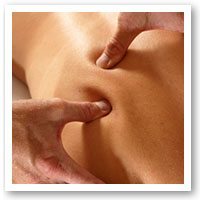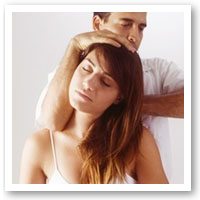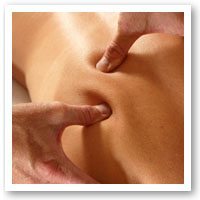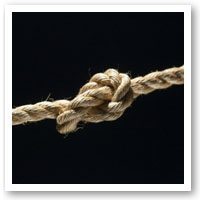Posts
Pre and post massage for athletes.
/in Massage Therapy /by Andrew If you’re training for a event coming up and are looking to be in tip-top shape, the needs of those pre sport verses the needs of those post sport are very different. Pre sport massage focuses on relieving muscles via light compression and lymphatic release, where as post sport focuses on repair, via slow deep friction techniques, stretching (passive and active) and mobilisation. Pre sport massage should not be invasive as massage can temporarily weaken muscles in order to aid in successful repair.
If you’re training for a event coming up and are looking to be in tip-top shape, the needs of those pre sport verses the needs of those post sport are very different. Pre sport massage focuses on relieving muscles via light compression and lymphatic release, where as post sport focuses on repair, via slow deep friction techniques, stretching (passive and active) and mobilisation. Pre sport massage should not be invasive as massage can temporarily weaken muscles in order to aid in successful repair.
Pre sport massage
Pre sport massage is given under the assumption that the athlete is pre conditioned to the activity that they are about to undertake and is therefore a means of enhancing the natural health of muscles by stimulating blood flow to provide nutrients to muscles in a relaxed state, and the lymphatic system, to remove waste from muscles that may be lingering. The massage focus is optimisation, to reduce risk of damage (not to undo damage).
Post sport massage
Post sport massage is focussed on undoing damage caused during activity; with an emphasis on (post sport) it is never advised to get this type of massage before a sport event. The massage focuses on breaking up scar tissue, tight connective tissues, and posture. Generally it is slower than remedial massage to focus on fibre release and increasing range of movement. I like to apply trigger point therapy within my post sport treatments as it allows for a far more successful release and breakdown of scar tissue, therefore, more successful mobilisation post treatment.
Benefits of Trigger Point Therapy
/in Massage Therapy /by Andrew Trigger Point Therapy focuses on relieving referred pain or sensation (pain, tenderness, pins and needles, numbness and burning). A trigger point is a point of bound / taught fibres in a muscle, often referred to as muscle knots, a point of heightened tenderness or sensitivity, which prevents full usage of a particular muscle. Active trigger points have predictable referral patterns, some causing pain locally to the effected trigger point, others referring to other regions of the body. Due to this referral, a domino effect in terms of pain or injury can occur if trigger points are left untreated; this meaning an area previously unaffected by referred sensation may become affected.
Trigger Point Therapy focuses on relieving referred pain or sensation (pain, tenderness, pins and needles, numbness and burning). A trigger point is a point of bound / taught fibres in a muscle, often referred to as muscle knots, a point of heightened tenderness or sensitivity, which prevents full usage of a particular muscle. Active trigger points have predictable referral patterns, some causing pain locally to the effected trigger point, others referring to other regions of the body. Due to this referral, a domino effect in terms of pain or injury can occur if trigger points are left untreated; this meaning an area previously unaffected by referred sensation may become affected.
From a patients perspective.
Trigger Point Therapy is a compression of the point of tenderness, which temporarily heightens the sensation already experienced due to additional pressure being applied to the area. The pressure must be held and maintained in order to obtain a release; in terms of sensation, it feels as though the practitioner holding the point is slowly releasing pressure, in actual fact the point is releasing / relaxing, which gives a sensation of relief as muscle function is improved and referred sensation is reduced.
Trigger Point Therapy with Massage.
Massaging an area with active trigger points can be painful; however, when massage and trigger point therapy is combined a practitioner can release muscles far more effectively. Remedial massage greatly increases blood flow to muscles, while trigger point therapy releases regions within muscles with restricted blood flow, thus providing nutrients to depleted muscle fibres in a more effective fashion. Active trigger points create a local twitch response (often confused with a muscle spasm); if a trigger point is left active after massage it won’t be long before it becomes tight and sore again due this twitch response, as the muscle is over engaging. Releasing trigger points allows for far greater fibre release with slow / stretching massage, which increases range of movement and encourages capillary growth, resulting in healthier muscle fibres.
In terms of performance: Clients who I have treated with trigger point therapy gain longer periods of relief and suffer less issues with their lymphatic system in terms of acid and other waste build up in their muscles; this meaning greater endurance and performance. If you enjoy sport and like massage, this is definitely something to consider within your fortnightly to monthly massage. Note: Trigger points take time to release, so treatment should be focused on a specific area of the body, not all over, to get the best results.
Should I See a Chiropractor or a Physiotherapist?
/in Chiropractic /by Andrew When you’re faced with pain, especially if it’s the first time, it’s hard to know who to turn to. Can your GP help, or do you need someone more specialised, someone who treats your specific issue? Both physiotherapy and chiropractic professions specialise in the musculoskeletal system, to help improve overall health and well-being.
When you’re faced with pain, especially if it’s the first time, it’s hard to know who to turn to. Can your GP help, or do you need someone more specialised, someone who treats your specific issue? Both physiotherapy and chiropractic professions specialise in the musculoskeletal system, to help improve overall health and well-being.
What is a Chiropractor?
Chiropractors are known as the ‘spinal health experts’ who work to help improve your body’s nervous system. Chiropractic assumes that a healthy and properly functioning nervous system equates to improved overall health and well-being. Chiropractors address all demographics including babies, infants, athletes and the elderly.
Chiropractic focuses primarily on the spine and the alignment of the vertebrae, the skull and the pelvis. The spinal column, consisting of the vertebrae, contains and protects the spinal cord and the many nerves that branch out from it. These nerves form the nervous system and are responsible for all our bodily functions. A chiropractor aims to improve the flow of information along these nerves, which are sometimes impaired through misalignment of the vertebrae.
Though chiropractic is not just about the spine – it also focuses on nutrition, exercise and your health and well-being as a whole.
Lower back pain is one of the principal reasons people consult a chiropractor, although they also treat a number of other issues, both structural and functional. Examples include digestive issues and headaches. Research suggests it can also be helpful in treating menstrual pain, fibromyalgia and carpal tunnel syndrome.
Chiropractors primarily use chiropractic adjustments to help improve the nervous system. Sometimes they ëmove’ areas that are not moving properly. This is referred to as an ëadjustment’. They may also use an ìactivatorî, a pen-like instrument that addresses the misalignments in the spine and pelvis by correcting them with a gentle percussive force. There are a number of different styles of Chiropractic. Other techniques they could use are massage or hot or cold packs.
Are Chiropractors Qualified?
To practise in Australia, chiropractors must complete a five-year university qualification, which is subdivided into a three year Bachelor and a two year Masters degree. They are also regulated and registered by the government. The Australian Government has set up a regulating body to oversee the industry and ensure high standards of practise are maintained.
What is a Physiotherapist?
Physiotherapy, like chiropractic, aims to improve your health and wellbeing. Physiotherapists are often referred to as movement specialists and aim to help your joints and muscles work to their full potential. They often give exercise programs to patients to improve mobility, and will also use in massage, stretching, ultrasound and laser therapy, and mobilisation and manipulation.
Common problems that physiotherapists treat include sports injuries, back and neck pain, arthritis, repetitive strain injury (RSI) and even asthma. They will use a range of treatments includuing massage, exercise programs, hot and cold packs and aids such as crutches and wheelchairs to help improve movement and mobility.
Are Physiotherapists Qualified?
In Australia, physiotherapists will have completed either a four-year degree in Physiotherapy of Applied Science (Physiotherapy), or a graduate entry Masters program (a two-year accelerated program). These qualifications enable practitioners to apply for registration with the Physiotherapists Registration Board. In 2010, a single national registration and accreditation program was set up in Australia, with the Physiotherapy Board of Australia responsible to registering physiotherapists and students.
Sports Massage: Pre and Post Event Massage
/in Massage Therapy /by Andrew If you’re training for an upcoming event and are looking to be in tip-top shape, the needs of those pre sport verses the needs of those post sport are very different. Pre sport massage focuses on relieving muscles via light compression and lymphatic release, whereas post sport focuses on repair, via slow deep friction techniques, stretching (passive and active) and mobilisation. Pre sport massage should not be invasive as massage can temporarily weaken muscles in order to aid in successful repair.
If you’re training for an upcoming event and are looking to be in tip-top shape, the needs of those pre sport verses the needs of those post sport are very different. Pre sport massage focuses on relieving muscles via light compression and lymphatic release, whereas post sport focuses on repair, via slow deep friction techniques, stretching (passive and active) and mobilisation. Pre sport massage should not be invasive as massage can temporarily weaken muscles in order to aid in successful repair.
Pre sport massage
Pre sport massage is given under the assumption that the athlete is pre conditioned to the activity that they are about to undertake and is therefore a means of enhancing the natural health of muscles by stimulating blood flow to provide nutrients to muscles in a relaxed state, and the lymphatic system, to remove waste from muscles that may be lingering. The massage focus is optimisation, to reduce risk of damage (not to undo damage).
Post sport massage
Post sport massage is focussed on undoing damage caused during activity; with an emphasis on (post sport) it is never advised to get this type of massage before a sport event. The massage focuses on breaking up scar tissue, tight connective tissues, and posture. Generally it is slower than remedial massage to focus on fibre release and increasing range of movement. I like to apply trigger point therapy within my post sport treatments as it allows for a far more successful release and breakdown of scar tissue, therefore, more successful mobilisation post treatment.
Myofascial Trigger Point Therapy
/in Massage Therapy /by Andrew
Myofascial Trigger Point Therapy is a technique used by Massage Therapists which was developed over 50 years ago. Direct pressure is applied to a specific muscle that has become contracted or over-lengthened for extended periods of time preventing it from returning to its rest position.
Trigger Points, also commonly referred to as “knots”, are felt as painful areas in the muscles that cause pain to refer into other parts of the body. The individual may also experience symptoms such as tingling, numbness, burning, as well as weakness and restricted range of motion in the affected muscle. These points can occur in any part of the body, but are often most likely to be found in the upper back or neck. Trigger points will usually occur on both sides of the body, with one side being more symptomatic than the other.
Upon compression by the therapist, the trigger point will often reproduce the individual’s pain pattern. As the muscle relaxes, the pain and discomfort should then diminish. Massage therapists will apply pressure to trigger points using their thumbs, knuckles and elbows, as well as with specialised treatment tools. T-bars made of wood, plastic or metal, often rubber capped, may be used.
The most common causes of trigger points are poor posture, structural imbalances, repetitive activity and overuse, emotional factors, and direct trauma or injury.
A Knotty Problem
/in Massage Therapy /by Andrew
It is likely that most individuals have at some point in time experienced sensations of pain and discomfort caused by “knots”, also known as Trigger Points. These are painful areas in the muscles that cause pain to refer into other parts of the body, as well as create symptoms of weakness and fatigue.
A Trigger Point is the body’s response to a physical, emotional or chemical disturbance where the muscle becomes contracted or over-lengthened for extended periods of time preventing it from returning to its rest position. This then restricts the movement of the muscle and decreases circulation. The muscle then becomes deprived of nutrients and oxygen, which results in a collection of metabolic waste.
The most common causes of Trigger Points are poor posture, structural imbalances, repetitive activity and overuse, emotional factors, and direct trauma or injury. These points can occur in any muscles of the body, but are most commonly found in the neck and upper back. Trigger points can themselves bring about a variety of issues, such as tension headaches, tinnitus (ringing in the ears), jaw pain, lower back pain and carpal tunnel syndrome.
Trigger Points can be effectively treated with massage therapy where direct pressure is applied to the area in question. Upon compression, the Trigger Point will often reproduce the individual’s pain pattern. As the muscle relaxes, the pain and discomfort should then diminish.
Self care is also important to help prevent the re-occurrence of Trigger Points. This can include using a heat pack when muscles are tense or painful, having hot baths after treatment, keeping well hydrated, and carrying out simple stretch and range of motion exercises. Your massage therapist will be able to assist you with such exercises, and is also there to answer any questions or concerns that you may have.
Does sitting affect your health?
/in Massage Therapy /by Andrew Within the last 30 years, our world has seen astounding advances in our technological capabilities, which has affected the way people carry out their daily lives. Nowadays, most people are required to spend the majority of their working day in an office environment sat at a desk in front of a computer.
Within the last 30 years, our world has seen astounding advances in our technological capabilities, which has affected the way people carry out their daily lives. Nowadays, most people are required to spend the majority of their working day in an office environment sat at a desk in front of a computer.
Our bodies, however, were not designed to remain in one position for long periods of time; they were made to move. When we are sedentary, our body responds by burning fewer calories and slowing down our circulation. Such a lifestyle also leads to postural problems, which can develop into chronic health issues.
In a seated position, certain postural muscles, especially in our back and neck, start to become short and tight from being overworked. This then leads to issues such as upper or lower back pain, stiff shoulders, neck pain, tight hamstrings, headaches and migraines. The muscles that support our spine also become weak, like our gluteal and abdominal muscles.
Repetitive strain injuries, such as carpal tunnel syndrome, are also becoming more widespread and it is not uncommon for keyboard users to complain of wrist, arm and shoulder pain or discomfort.
I am sure the majority of us, including myself, will have experienced some or all of these above symptoms at some point in our lives.
So what can we do about it? Take time to get up and move about, as well as to stretch. Whilst seated, be aware of your own posture and at work try to change the nature of your tasks as often as you can. In addition, try to develop a regular exercise routine even as simple as walking for 30 minutes a day.
Massage therapy is also extremely effective in this situation to release and relax the muscles, as well as to reduce overall tension and fatigue found within the body. Regular massage sessions are thoroughly recommended to assist in maintaining good body health and well-being.
